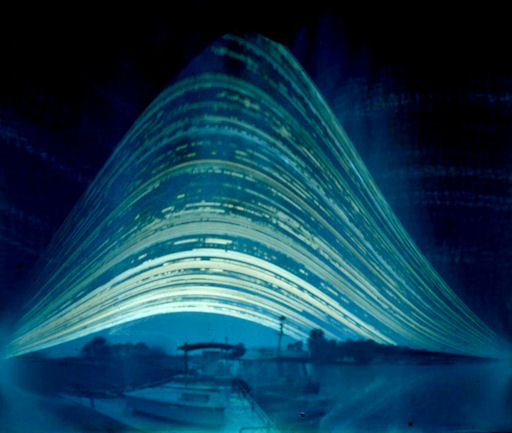~12~21~11~ SPACE WEATHER UPDATE~
DECEMBER SOLSTICE: Tonight is the longest night of the year in the Northern Hemisphere and the shortest night in the Southern Hemisphere. The December Solstice, which marks the change of seasons, occurs at 12:30 a.m. on the 22nd EST (9:30 p.m. on the 21st PST) when the Sun reaches its farthest point south on the celestial sphere. Happy Solstice!

THE AMAZING TAIL OF COMET LOVEJOY: Widespread reports of Comet Lovejoy's tail are being received from around the southern hemisphere. The ghostly plume emerges just before sunrise, jutting vertically upward into the eastern sky ahead of the sun.
"I observed the comet with my unaided eye for 55 minutes this morning," says Colin Legg of Mandurah, Western Australia. "I also captured a timelapse sequence of the comet rising as twilight progressed." Click on the image to set the scene in motion:
"In the image you can see 2 tails," notes Clegg. These are the dust and ion tails. The gaseous ion tail is blow almost directly away from the sun by the solar wind, while the heavier, brighter dust tail more closely follows the comet's orbit.
The visibility of both tails could improve in the days ahead as the comet moves away from the sun and the background sky darkens accordingly. Early-rising sky watchers should be alert for this rare apparition. [finder chart]
more images: from Steve Chadwick of Himatangi Beach, New Zealand; from Chris Picking of Wellington, New Zealand; from Paulo Morales Valdebenito of San Francisco de Mostazal, Chile; from Kosma Coronaios of Louis Trichardt, Limpopo Province, South Africa; from Willian Souza of Sao Paulo, Brazil; from Grahame Kelaher of Perth, Western Australia; from Minoru Yoneto of Queenstown, New Zealand;
THE SUN IN A BEER CAN: "I have captured the sun in an empty beer can," reports Jan Koeman of Kloetinge, the Netherlands. In June 2011, Koeman assembled a solargraph--a simple pinhole camera consisting of a beer can lined with photographic paper--and for the past six months he has used it to record the sun's daily motion across the Dutch sky. Today he removed the photo-paper for inspection:
"This is what a photo with an exposure time of nearly 6 months looks like," says Koeman. The highest arcs were traced by the summer sun of June 2011. The lowest arc was made just today, Dec. 21st, on the eve of the 2011 winter solstice. Occasional gaps are caused by clouds.

Solar wind
speed: 382.1 km/sec
density: 8.4 protons/cm3
explanation | more data
Updated: Today at 1827 UT
X-ray Solar Flares
6-hr max: C2 1528 UT Dec21
24-hr: C4 0455 UT Dec21
explanation | more data
Updated: Today at: 1800 UT
![]()
Daily Sun: 21 Dec 11
Growing sunspot 1382 is beginning to crackle with C-class solar flares. Credit: SDO/HMI
![]()
Sunspot number: 139
What is the sunspot number?
Updated 20 Dec 2011
Spotless Days
Current Stretch: 0 days
2011 total: 2 days (<1%)
2010 total: 51 days (14%)
2009 total: 260 days (71%)
Since 2004: 821 days
Typical Solar Min: 486 days
Updated 20 Dec 2011
The Radio Sun
10.7 cm flux: 137 sfu
explanation | more data
Updated 20 Dec 2011
![]()
Current Auroral Oval:
Switch to: Europe, USA, New Zealand, Antarctica
Credit: NOAA/POES
![]()
Planetary K-index
Now: Kp= 1 quiet
24-hr max: Kp= 2 quiet
explanation | more data
Interplanetary Mag. Field
Btotal: 6.8 nT
Bz: 1 nT south
explanation | more data
Updated: Today at 1827 UT
![]()
Coronal Holes: 21 Dec 11
There are no large coronal holes on the Earthside of the sun. Credit: SDO/AI





